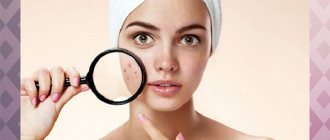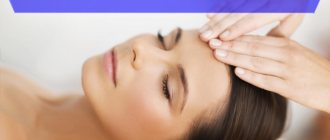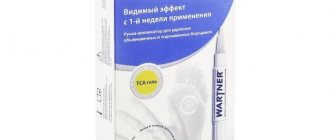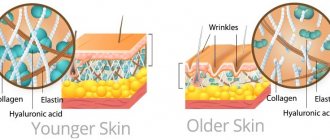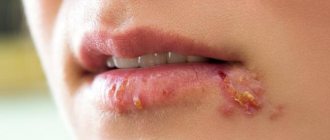06/13/2013 / Peeling
Lactobionic peeling is a new generation of chemical peels. It has a complex effect on the skin and is suitable for patients of different age groups. Due to its minimal irritating effect, it is successfully used even on sensitive, acne-prone skin.
Lactobionic acid or 4-O-β-galactopyranosyl-D-gluconic acid is a polyhydroxy acid. Formed due to the oxidation of milk sugar (lactose disaccharide), it consists of gluconic acid and galactose connected by an ester bond. Lactobionic acid began to be used in cosmetology quite recently. Previously, it was used in medicine only as a stabilizer during transplantation of donor organs and the preparation of antibacterial drugs for intravenous use. Due to its unique ability to synthesize chelate compounds with metals of variable valence, including iron, lactobionic acid has no equal in its stabilizing properties.
Indications for the use of peeling with lactobionic acid
1. skin aging; 2. premature aging; 3. presence of hyperpigmentation; 4. decreased elasticity; 5. skin tendency to inflammatory reactions; 6. wrinkles: both facial and age-related, deep; 7. drooping corners of the mouth, blurry oval of the face; 8. presence of scars and ingrown hairs; 9. photoaging.
Polyhydroxy acids are characterized by gradual penetration into the layers of the skin, so their use in peeling procedures does not cause severe burning and irritation of the skin.
Lactobionic peeling can be safely combined with other cosmetic procedures - laser facial resurfacing and microdermabrasion, which helps achieve a more noticeable cosmetic effect. This sets it apart from other peelings.
Contraindications for peeling with lactobionic acid:
- skin diseases in the acute phase of inflammation; - pregnancy at any stage, breastfeeding; - increased body temperature; - epilepsy, mental disorders; - childhood; — allergic reactions to peeling components; - herpes in the active phase; - the presence of pustules on the skin with the active release of purulent-necrotic contents.
Chemical peels should be carried out in a beauty salon and only by experienced, specially trained specialists. If some rules are not followed, severe skin burns, difficult to control allergic reactions, scarring and pigmentation may occur.
The presence of AIDS or HIV infection is a relative contraindication to this procedure, and the question of the advisability of prescribing peeling is decided on a strictly individual basis. Due to pathologically reduced immunity and a poor degree of skin regeneration, in some cases it is necessary to abandon such cosmetic manipulations.
If there is a herpes virus in the body, albeit in an inactive state, it is recommended to carry out preventive treatment before performing lactobione peeling. People whose therapy requires the use of isotretinoin cannot undergo chemical peels for six months after stopping the drug, since such medications reduce lymph circulation and disrupt blood flow, which can slow down the process of cell regeneration in the post-peel period.
In patients with psoriasis, chemical peels can lead to exacerbations and even greater spread of psoriatic rashes on the surface of the skin.
Are there any contraindications and side effects?
Before the procedure, the cosmetologist must find out whether it is possible to use lactobionic acid in a particular patient.
Important! The salon master must conduct an allergy test. To do this, apply a small amount of the exfoliating mixture to an inconspicuous area of skin, most often on the wrist or elbow. If after 10-15 minutes there is a reaction in the form of severe swelling and no redness, then exfoliation can be carried out.
In addition to individual intolerance to acid, there are the following contraindications to exfoliation:
- The presence of purulent inflammatory elements in the exfoliation area;
- Mental and nervous disorders;
- Exacerbation of viral skin diseases (herpes);
- Pregnancy and lactation;
- Young age up to 16 years;
- Tendency to allergic reactions;
- Acute infectious diseases accompanied by elevated body temperature.
Exfoliation with lactobionic acid is not contraindicated in AIDS. In this case, consultation with your doctor is necessary.
In case of unprofessionalism of the cosmetologist or violations in post-peeling care, side effects may occur:
- Exacerbation of herpes and other chronic skin diseases;
- Hyperemia, swelling and itching;
- Infection of the epidermis;
- Increased keratosis and pigmentation;
- Allergy.
If complications occur, you should immediately contact a cosmetologist or dermatologist.
Unique properties of lactobionic acid
1. Regeneration.
Lactobionic acid contains galactose, which is famous for its wound-healing properties. Acid helps restore damaged skin structures and speed up regeneration. It is precisely because of its unique ability to stimulate wound healing that it is successfully used on skin prone to acne and inflammatory reactions.
2. Gradual penetration.
Lactobionic acid has a significant molecular weight and a relatively large molecular size, due to which it penetrates into the skin layer by layer, gradually and less traumaticly than other acids - glycolic, lactic. That is why this type of acid does not provoke a strong burning sensation during peeling and is not inclined to provoke the development of post-peeling complications.
3. High biocompatibility with human skin.
Lactobionic acid is well accepted by the skin and, if all stages of chemical peeling are followed, does not provoke excessive peeling, itching and facial hyperemia.
4. Fight against photoaging.
Lactobionic acid inhibits matrix metalloproteinases, which act as the main cause of skin aging. They destroy the main components of the intercellular matrix of the skin, in particular collagen, which leads to loss of elasticity, the appearance of deep wrinkles and sagging of the oval of the face. Metalloproteinases trigger the aging process of the skin and provoke the formation of red oblong formations on the face - telangiectasia. They are sharply activated during prolonged exposure to the sun, leading to rapidly developing photoaging.
5. Antioxidant properties.
Lactobionic acid can act as a link between iron ions, providing a pronounced antioxidant effect. It neutralizes free radicals and protects the skin from the harmful effects of ultraviolet radiation.
6. Deep hydration.
Lactobionic acid helps saturate the skin with life-giving moisture. This occurs due to the ability of the acid to actively adsorb moisture and at the same time retain the resulting liquid from the outside in the skin, even during prolonged exposure to unfavorable climatic conditions - with increased dry air. After use on the surface of the skin, lactobionic acid creates an aqueous film, which for a long time prevents the skin from drying out and developing an unpleasant feeling of itching and tightness.
7. Exfoliating effect.
Lactobionic acid actively promotes the renewal of cellular structures, helping to gently but deeply cleanse the skin of dead cells, particles of dust and dirt clogged in the pores.
8. Possibility of use at any time of the year.
Along with mandelic acid, lactobionic acid acts as a photoprotector, allowing peeling procedures to be carried out at any time of the year, including in the summer, without any fear of unexpected skin reactions, such as the formation of freckles and age spots.
9. Rejuvenation, increased skin tone.
Thanks to collagen synthesis and slowing down photoaging, the acid prolongs youth.
10. Active recovery after traumatic cosmetic procedures
— laser resurfacing, plastic surgery, microdermabrasion.
The essence of innovative cleansing
Lactobionic acid has been used in the world of cosmetic services for a short time. Previously, it was used only for medical purposes, as a stabilizer during organ transplantation or as a component of antibacterial injections for intravenous administration.
The lactobione peeling procedure is painless. The relatively large acid molecule penetrates deep into the epidermis gradually, without causing stress and rejection in the skin cells.
The product used for peeling is easily accepted by the skin and does not cause significant side effects. The procedure is recommended for very sensitive and dehydrated skin. Lactobionic peeling can be performed at any age and regardless of the time of year or the weather outside.
Another advantage of lactobione peeling is that it does not in any way interfere with laser rejuvenation procedures or microdermabrasion in the future. On the contrary, cosmetologists note an increased effect from such a combination.
You cannot exfoliate with lactobionic acid on your own at home. This is fraught with skin burns and accompanying complications. Such troubles can occur after a violation of the peeling technology or excessive exposure to an acidic agent.
Lactobionic acid is a polyhydroxy acid. The full name is 4-O—galactopyranosyl-D-gluconic acid. Its structure is represented by galactose and gluconic acid molecules held together by ester bonds. The complex structure determines the multi-valued effect of the substance on the skin.
Lactobionic acid has unique, beneficial properties for the skin:
- Has a restorative, wound-healing effect. The acid stimulates skin regeneration and accelerates the healing of epidermal damage. This quality allows you to quickly eliminate acne and acne, and prevents further inflammatory reactions.
- Cleans well. The product delicately removes particles of dust and dirt embedded deep in the pores. The acid actively affects keratinized layers and non-working cells, promoting their removal from the epidermis.
- Intensely moisturizes. The lactobionic ingredient is distinguished by its ability to absorb moisture particles and retain them inside the skin for a long time. Thus, a water film is formed in the upper layers of the epidermis, which normalizes the moisture balance in the cells, preventing tightness and discomfort even in an extremely dry environment.
- Acts as an excellent antioxidant. The ability to bind iron ions helps reduce the negative effects of free radicals and prevent damage to tissues from the sun's ultraviolet rays.
- Slows down age-related skin aging. Cosmetologists noted a high level of fight against the primary cause of aging - matrix metalloproteinases. By inhibiting them, age-related changes are suspended, which lead to the deepening of old wrinkles and the appearance of new ones, ptosis and loss of fiber elasticity and tone.
- Has a rejuvenating effect. The peeling composition activates collagen synthesis. This ensures a prolonged, natural process of skin rejuvenation.
After lactobione peeling, there is no itching, development of persistent erythema or severe peeling of dead cells. This is due to the excellent compatibility of the acidic product and the internal environment of the skin.
The main benefits of peeling with lactobionic acid
1. Gentle removal of dead cells, without irritating the skin. Lactobionic peeling reduces signs of inflammation on the face and reduces the severity of acne.
2. Leveling the skin texture. Thanks to its ability to cleanse the skin, restore metabolic processes, influence fibroblasts, and enhance collagen synthesis, this type of peeling significantly rejuvenates, tightens the skin and eliminates wrinkles, including deep ones.
3. Reduced pigmentation. Lactobionic peeling removes the dead layer of cells, exfoliates and brightens the skin, reducing the intensity of age spots.
4. Increasing skin hydration levels. The ability of acid to retain moisture has made lactobione peeling popular in countries with dry, hot climates, as well as in situations with excessively dry skin.
5. Short rehabilitation period. The low damaging properties of peeling with lactobionic acid allow you to return to your previous lifestyle and appear in society almost immediately after the procedure.
6. Reduced acne. The reduction of acne and blackheads is facilitated by deep cleansing of the skin, smoothing and anti-inflammatory properties of this chemical peeling.
Peeling with lactobionic acid destroys skin cells at different depths, which helps to increase the rate of collagen synthesis and cell renewal. Naturally, this process traumatizes the skin to a certain extent, but at the same time it also contributes to a powerful push so that young cells begin to appear, and the skin becomes more youthful and elastic. With the help of the chemical components of the acid, the epidermal barrier is restored, and the epidermis regains its ability to retain life-giving moisture.
The use of lactobionic acid as a peel requires certain preparation, with which, as a rule, no pronounced post-peeling reactions occur.
Indications for peeling
It is recommended that every woman with the following facial imperfections use this innovative procedure:
- decreased tone, manifestation of ptosis;
- hyperpigmentation, including freckles;
- the first signs of skin aging;
- photoaging of integument;
- decreased soft tissue tone;
- increased sensitivity of the integument;
- tendency to acne and inflammation on the face;
- wrinkles of any nature (facial, age-related);
- problem of ingrown hair;
- scars, scars.
Innovative peeling can be performed as a preparation for more radical rejuvenation techniques. The procedure does not take much time, but provides greater results.
Stages of peeling with lactobionic acid.
Pre-peeling preparation
Two weeks before peeling, it is recommended to use retinoids, fruit acids with a low percentage of acidity, whitening agents (arbutin, ascorbic and kojic acid, extracts of yarrow, lemon, parsley, cucumber), antioxidants (selenium, vitamins, succinic acid), moisturizers ( hyaluronic acid and glycerin), sunscreens.
Pre-peeling preparation is carried out with the aim of smoothing the stratum corneum of the skin, accelerating regeneration processes and creating favorable conditions for deeper penetration of the chemical components of the acid. Completing all preparatory actions helps reduce the risk of developing pigmentation after chemical peeling, inflammation and peeling.
Aromatic retinoids should be used only in the recommended dosage and should be discontinued a week before the lactobione peel. The fact is that they are capable of increasing the depth of penetration of acid, thereby causing skin burns. Traumatic cosmetic procedures (hair removal, laser facial resurfacing) should be carried out no later than a week before the intended peeling.
If the first use of acid is carried out with a preparation of low concentration, then preliminary preparation may not be required. Skin with severe pigmentation requires long-term pre-peeling treatment. In this case, fruit acids should be started to be used several weeks before the scheduled peeling, combining them with whitening cosmetics - citric acid, arbutin, bearberry extract.
Why is pre-peeling preparation necessary?
1. By using low-concentrated acids and bleaching agents, the skin adapts and prepares it for the more aggressive effects of peeling. 2. Pre-peeling preparation allows you to identify allergic reactions even before peeling, which makes it possible to prevent the development of more serious complications. 3. There is a significant leveling of the skin, its thinning, which allows the peeling to penetrate the skin faster and more evenly, subject to strict control by the cosmetologist. 4. Pre-peeling preparation reduces the production of melanin, preventing the development of increased pigmentation after a peeling session with concentrated lactobionic acid.
Carrying out the peeling itself with lactobionic acid
How is the lactobione peeling procedure performed?
Skin cleansing
Cleansing procedures are carried out using a special milk containing hyaluronic acid, which is quite gentle on the skin and can even be used on the eyelid area. After this, the patient’s face is cleansed with a toner, also containing a weak percentage of acid, and a cosmetic gel containing glycolic acid is applied to it. This gel effectively removes excess fat, dirt and dust from the skin surface. It helps smooth the skin and more evenly distribute lactobionic acid inside. The use of this gel on the area under the eyelids is strictly prohibited. Some beauty salons use soap-containing components and alkalis to cleanse the skin, which is also undesirable, as they disrupt the pH of the skin and reduce the overall positive effect of peeling.
Application of lactobionic acid
The acid is applied with a brush in a certain sequence: first on the forehead and temples, then on the cheeks, neck and chin, and then in the center of the face, finishing with the fixed part. It is recommended to place napkins over the eyes so that the acid does not accidentally get into them and the patient does not open them every now and then while applying the acid. The most commonly used is 5% lactobionic acid, but other concentrations ranging from 2% to 10% are also available.
Neutralization process
The exposure time is determined by the individual reaction of the body, the degree of hyperemia, initial pigmentation, the concentration of the original acid composition and other factors. If there is a strong burning sensation or massive redness, the procedure must be stopped immediately. As a rule, neutralization is carried out no later than 10-15 minutes from the start of covering the skin with acid.
Removing lactobionic acid residues from the skin surface
After using the neutralizer, wash off the skin with plenty of water. The face is treated with intensive moisturizing compounds, anti-inflammatory agents, and the patient receives detailed instructions on post-peeling care at home.
Lactobionic peeling is carried out in a course of about 6 procedures with an interval of 15 days.
Post-peeling care
For several months after peeling, it is mandatory to use products that block melanogenesis and protect against ultraviolet radiation. It is very important to provide the skin with the necessary moisture, since intensive hydration of the epidermis several times reduces the risk of scarring and promotes normal tissue epithelization.
For 12 hours after peeling, do not expose the skin to direct sunlight or contact with water. After this period, you can wash your face only with boiled, warm liquid or infusion of anti-inflammatory herbs. Under no circumstances should you artificially speed up the healing process or peel off any crusts that form.
Modern means used in the post-peeling period are aimed at preventing the inflammatory process and the development of complications. To protect the skin from moisture loss and the penetration of bacterial microflora, preparations are used that cover the skin with a colorless protective film, containing hyaluronic acid and aloe vera extract. Be sure to use drugs with antioxidant effects based on green tea, grape seeds, as well as anti-inflammatory drugs with extracts of witch hazel, calendula, and arnica. It is recommended to take vitamin complexes, active antioxidants, and vasoprotectors internally.
How is the lactobin peeling procedure performed?
The peculiarity of the lactobionic exfoliation procedure is the special preparation of the woman. 2 weeks before exposure, the epidermis is treated with special cosmetics. They contain retinoids, fruit acids, and antioxidants. The cosmetologist can also recommend whitening, moisturizing and sunscreen products.
Pre-peel preparation is required for the following:
- Level the surface of the epidermis so that exfoliation is uniform;
- Activate regeneration processes in dermal cells;
- Prepare the epidermis for better penetration of lactobionic acid;
- Reduce melanin production to reduce the risk of pigmentation during post-peel recovery.
In the period before the procedure, the cosmetologist prescribes retinoids. They should be used in a strictly prescribed dosage and should be discontinued a week before exfoliation. 7 days before exfoliation, you cannot perform any manipulations that violate the integrity of the skin (laser resurfacing or hair removal).
The exfoliation procedure itself comes down to cleansing the face, applying a composition with lactobionic acid of a certain concentration to it, subsequent neutralization of the acid layer, and washing. At the end of the procedure, the cosmetologist gives important recommendations for post-peeling care.
Possible complications
1. Development of the herpetic process. If you find signs of such an infectious disease, then you should consult a doctor to prescribe antiviral ointments and medications.
2. Tissue swelling, redness.
3. Skin peeling. During the week, the skin may peel slightly after a chemical peel. This is a completely normal reaction.
4. Attachment of infection. It develops when the rules of the procedure are not followed or in the absence of adequate facial care in the post-peeling period.
5. Exacerbation of chronic skin diseases.
6. Hyperkeratosis.
7. Hyperpigmentation.
8. Allergic reactions.
After peeling with lactobionic acid, the patient needs regular preventive examinations. If pronounced and unexpected reactions occur - swelling, hyperemia, itching, bleeding, purulent discharge, inflammation, you should immediately contact a dermatologist for examination and treatment.
Rehabilitation and further skin care
Provided that pre-peel preparation is carried out well and all stages of lactobione peeling are followed, the risks of complications and the formation of age spots after the rejuvenation procedure are minimal.
Basic rules for facial skin care after Alpica lactobione peeling:
- in the first twelve hours it is necessary to prevent contact of the treated areas of skin with water in any way;
- on the first day after peeling, it is important to avoid exposure to sunlight on the skin;
- on the second day it is allowed to cleanse the skin with boiled water or decoctions of medicinal herbs.
Further facial skin care after alpic peeling involves the use of the following products:
- drugs that stimulate the process of skin cell regeneration;
- moisturizers with hyaluronic acid and aloe extracts;
- sunscreen cosmetics.
For two months after peeling, it is necessary to reduce the time of active sports, limit visits to baths, saunas, swimming pools, and solariums.
In order to prevent the development of inflammatory processes, the cosmetologist may recommend that the patient take vitamin complexes and antioxidants in tablet form.
Important: it is strictly forbidden to pick off the crusts that form on the skin after peeling. Otherwise, scars will form that are almost impossible to remove.
ADVERTISING
Prices and brands of peelings
Lactobionic peeling is an uncommon procedure in beauty salons and aesthetic medical centers, since the use of lactobionic acid for cosmetic purposes began recently.
Among the companies that offer lactobione peeling are the following: Renew (Israel), Natinuel (Italy), Syrio Pharma (Italy), Tegor (Spain), NeoStrata (USA). The cost of one procedure in a beauty salon ranges from 1,600 to 5,500 rubles. On average, the course will cost 18,000 - 20,000 rubles.
Tags: other
Market Analytics
- Black Lives Matter movement: reaction and consequences for the beauty industry
- COVID-19 is changing the rules of the game in the cosmetics market
- Beauty of the future: cosmetic innovations 2020
Convenient search for beauty salons on our website
Beauty salons in Moscow Beauty salons in St. Petersburg Beauty salons in Ekaterinburg Beauty salons in Novosibirsk
Latest blog posts on our website
- Naturecream / Apricot kernel oil for face
- Naturecream / MATRIXYL3000 - the best skin elasticity stimulator
- Naturecream / SPF in Natural Oils
- Naturecream / Geranium (Pelargonium) oil for skin health and beauty
- Prostye-sovety / Save on a beauty salon: procedures that can be done at home
- Naturecream / Growth Factor - brings back youth?
- Oksana-Lezina / 3 effective abdominal exercises from a fitness instructor for beginners
- Prostye-sovety / Making perfect curls at home
- Prostye-sovety / Which hair removal method to choose
- Naturecream / Wrinkles Puppets
Latest forum topics on our website
- Natalya / How to properly make a gelatin mask?
- Mrs._Smith / Badly sunburned! What to do?((
- Ice / Is it necessary to combine fitness classes with a diet?
- Antonova / What can be used for hair loss?
- Radio operatorKat / Who was on a protein diet?
Reviews of the procedure
Peeling with lactobionic acid for the face [Leave a review]
Leave your feedback about this procedure (it will appear on this page after moderation)
In this form, describe only
your personal
experience of undergoing the procedure.
In order to leave a comment regarding the content of the article, use another form - in the “comments” block at the bottom of the page.
Other articles in this section
| Azelaine peeling for the face Azelaine peeling is a procedure for superficial chemical cleansing of the facial skin, prescribed to patients with dermatological problems: rosacea, acne, rosacea and other pathological changes in the skin. Azelaic acid has a bacteriostatic effect against the mite that causes acne. |
| Acid peeling for face, body and legs Various types of peeling for different parts of the body (face, body, arms, bikini and décolleté, legs) will help your skin acquire a neat, well-groomed appearance. |
| Facial peeling Facial peeling - what is it, types, results after the procedure, before and after photos, what procedures can be combined with. About all this in this article. Peeling refers to deep facial cleansing products. The purpose of these products is to exfoliate dead horn cells, make the surface of the skin smooth, cleanse the skin of any impurities and stimulate the renewal of the epidermis. |
| How to find a good cosmetologist and where is the best place to do peeling The beauty and health of your skin is in your hands, so carefully choose a cosmetologist and the place where the procedure is performed. I wish you to find a good specialist and I hope my advice will help you with this. |
| Brossage or facial brushing Brossage or brushing is a superficial mechanical peeling that can be used by people intolerant to chemical acids. Brossage is not inferior in effect to superficial chemical peeling and does not cause an allergic reaction. |
| Milk peeling for the face Milk peeling is mainly a superficial chemical peeling, with the exception of aggressive preparations from some companies with high concentrations and very low pH, so the effect can be obtained from both a superficial-medium or even a medium peeling. But we will talk about superficial peeling, which affects only the upper stratum corneum of the skin. |
| Laser skin resurfacing Facial skin resurfacing (dermabrasion) is a deep peeling procedure during which the epidermis and part of the dermis are completely removed. One of the progressive methods of skin resurfacing is to carry out this procedure using a laser. In this case, its radiation leads to complete evaporation and coagulation of soft tissue to the required depth. |
| Ferul peeling for the face Ferul peeling is one of the most effective ways to eliminate wrinkles, age spots, circles under the eyes and other skin imperfections that upset many women. Just a few sessions will return your skin to its healthy appearance, youth and beauty. This procedure will effectively and quickly cope with cosmetic skin defects without changing your usual lifestyle. |
| Laser facial peeling Laser peeling, performed on the facial skin, is one of the physical rejuvenation techniques. It is based on the use of monochrome light radiation, which is a single wavelength, which, when exposed to tissue, leads to selective photothermolysis. As a result of this reaction, over 95% of the laser radiation energy is absorbed by one target tissue and is further converted into heat. As a result, the patient experiences selective evaporation of layers of skin, which makes it possible to remove age spots, acne scars, expression lines and some other skin defects. |
| Microcrystalline dermabrasion (mechanical peeling) for the face In the fight for an impeccable appearance with smooth, satiny skin, without scars, stretch marks and other unaesthetic defects, many methods have been invented. Microcrystalline dermabrasion or mechanical peeling is one of them. It is quite effective and is able to cope with defects such as scars, scars and stretch marks, and also has all the properties of mechanical peeling. |

